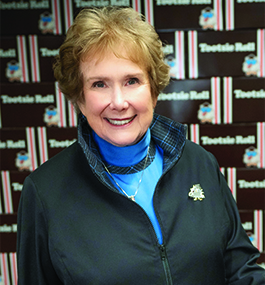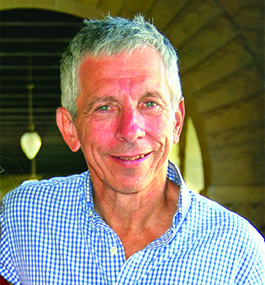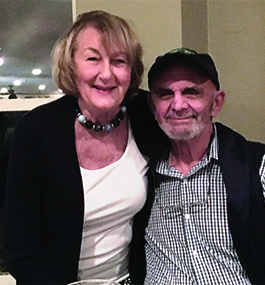Impact
The Science of Philanthropy
Three recent $1 million gifts are helping to put Brandeis’ Science 2A project and new engineering science program on a steep trajectory toward success.
Science 2A is the second phase of the expansion of the university’s science enterprise and overhaul of campus science facilities, a far-reaching effort that began with the construction of the Shapiro Science Center, which opened in 2009.
University officials believe the Science 2A phase will further strengthen the university’s position as a scientific leader, bolster Brandeis’ recruitment and retention of top faculty and students, and enhance interdisciplinary connections across campus.
Meet the visionary alumni who have made these transformative gifts.
Ellen Gordon ’65, H’21
Ellen Gordon believes Brandeis has always been ahead of its time. To ensure this remains true, she has made a $1 million gift to establish the Gordon Science Research Fellows Fund, which will support undergraduate student research in the sciences.
Gordon is CEO of Tootsie Roll Industries, innovating new business practices, and inspiring current and future entrepreneurs.
Her gift will enable a robust, rigorous experience for undergraduates conducting research in partnership with preeminent faculty, a hallmark of Brandeis’ core approach to science education. It will also help preserve Brandeis’ R1/Very High Research Activity ranking in the Carnegie Classification system.
Philip Kohl ’75
The philanthropic vision of Philip Kohl, who passed away in 2020, will reach far beyond his lifetime. Through planned giving, Kohl left Brandeis $1 million to create an active learning classroom during the expansion of the current science complex, as well as an additional $460,000 toward the existing Mary and Philip Kohl ’75 Endowed Scholarship.
Kohl saw engineering as a foundational discipline for the future, and wanted to help Brandeis contribute to the advancement of society by staying on the cutting edge of critical thinking and problem solving. The active learning classroom — a flexible space that allows students to pursue a range of science and engineering discoveries — will fulfill that vision.
“He would be excited about the collaborative educational environment his bequest will provide,” says Philip’s wife, Mary. “This will fulfill his dream of empowering Brandeis students to exchange new ideas, take risks, and innovate.”
Burt ’57 and Karin ’59 Meyers
A $1 million gift from the Meyers family is the first donation supporting a new engineering science program at Brandeis.
The Dr. Burt ’57 and Karin ’59 Meyers/Leonard Meyers Memorial Foundations for Innovation Fund provides critical, flexible seed funding that will help meet the program’s needs, including in the areas of faculty, curriculum, and research. The fund honors Burt’s late brother, Leonard Meyers, a trailblazing physicist who briefly taught at Brandeis. Leonard’s work focused on the symbiotic relationship between science, technology, art, and perception.
“We are most interested in endeavors aimed at improving the human condition,” says Karin, “and want to support Brandeis’ goal to create an interdisciplinary program that shares that vision.”
— Anne Lawrence Guyon
To support science and innovation at Brandeis, visit brandeis.edu/give.
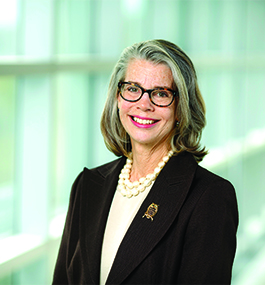
Hannah Peters
In Character, Defined From the Start
How long does it take for a university to define its identity?
Brandeis founding president Abram Sachar, H’68, explored that question in his 1976 book, “A Host at Last.” Just 28 years after its founding, had the university existed long enough to develop its own “special character”? Sachar believed it had. He wrote, “I would say the character is built around a sense of social consciousness, a concern for the underdog, and resistance to any kind of discrimination.”
Sachar knew Brandeis’ special character had been defined from the start, inextricable from what he called “the Jewish component”: the university’s founding on Jewish values and sponsorship by the Jewish community. Sachar understood this connection did not pertain only to religious observance but equally to values like academic access and excellence; a reverence for learning; and tikkun olam, Hebrew for “repairing the world.”
Brandeis turns 75 this year. Given this milestone, I’ve been revisiting Sachar’s book, which connects us with our history and prompts us to think about our future. I’m proud to say that, in every corner of our campus, our special character is still defined by a deep concern for social justice and academic excellence as viewed through the lens of Jewish values.
Here are just a few examples: The newly launched Vic ’63 and Bobbi Samuels ’63 Center for Community Partnerships and Civic Transformation is making ethical and respectful community engagement a central pillar of a Brandeis education, both in partnership with the Waltham Group and through new endeavors.
Elsewhere — for instance, through the ongoing build-out of science lab space, the establishment of fellowship opportunities, and the creation of degree programming in engineering science — we’re continuing our long legacy of learning across disciplines.
Finally, drawing on our unique position within the Jewish community, we have proudly launched a partnership with the Robert K. Kraft family and the Foundation to Combat Antisemitism to counter the rise of global antisemitism.
As Brandeis celebrates its first 75 years, we want to recognize the remarkable people and achievements that have brought us to this day, and many others that signal our bright future. Please join the entire Brandeis community for a weekend of celebration on Oct. 13-15. Anniversary festivities will happen alongside your favorite Reunion, Homecoming, and Family Weekend activities. There will be comedy, music, learning, dancing, and so much more. Alumni, students, family, friends, faculty, and kids are all invited.
It will be a treat to see you on campus for this special 75th anniversary weekend. To find out more, please visit brandeis.edu/75.
Thank you for all you do to exemplify Brandeis’ special character.
Warmly,
Hannah Peters
Senior Vice President of Institutional Advancement
A Show of Support, From Every Corner
Across the Brandeis community, students, alumni, and families are making a difference in securing the university’s future. Recent philanthropic support from former student-athletes, the Class of 1986, and the Parents Leadership Council is helping to beautify campus; create new recreational space; and boost scholarships, internships, and student services.
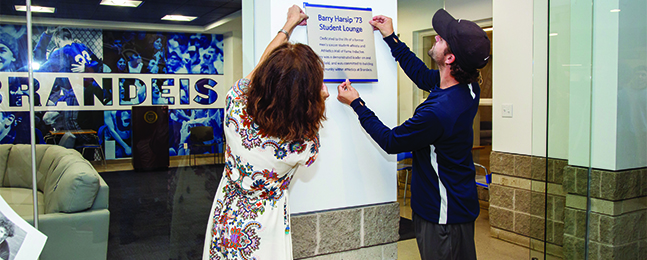
The Barry Harsip ’73 Student Lounge, named for the Joseph M. Linsey Brandeis Athletics Hall of Fame soccer player who died in 2020, gives busy student-athletes a place of their own to focus on their studies, unwind between practices, and refuel on healthy snacks. Made possible by a fundraising push coordinated by Harsip’s friends and family, the lounge was formally dedicated in October.
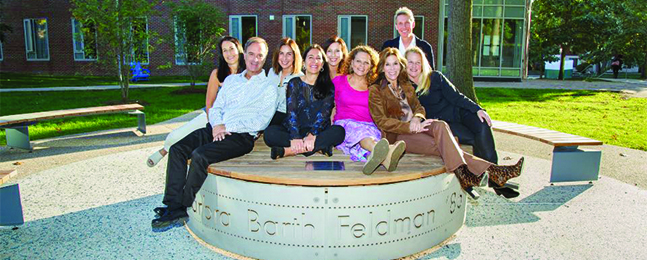
Members of the Class of 1986 honored the late Barbra Barth Feldman ’86, a unifying force in the lives of her friends, by creating an outdoor space in the center of Ridgewood Quad. The design — a circular cement foundation surrounded by curved benches — creates an open yet intimate place to gather.
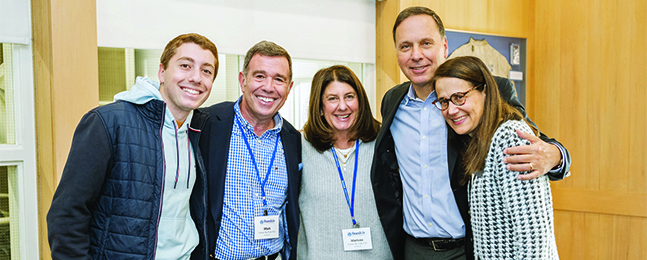
Proud smiles at the Parents Leadership Council Luncheon. From left: Isaac Fischer ’23; his parents, Mark Fischer ’83 and Marlene Kern Fischer ’85, both P’18, P’23, who are also the current PLC chairs; President Ron Liebowitz; and Jessica Liebowitz.
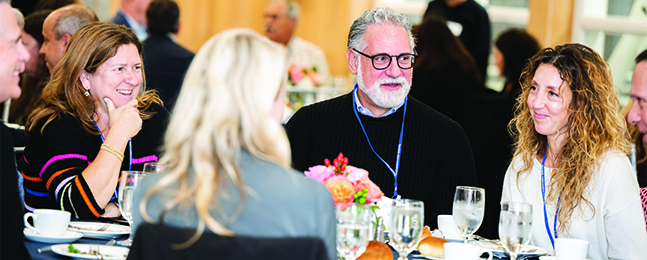
Janice Gross, P’26 (left), with incoming Parents Leadership Council chairs Steven and Lori Fineman, both P’26.
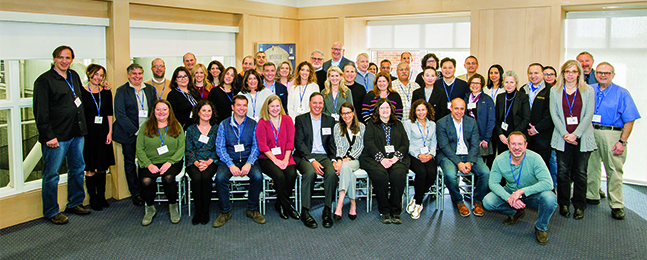
At the annual Parents Leadership Council Luncheon, parents of Brandeis students celebrated what the university means to their families. The PLC recognizes parent donors who support the university through an annual gift of $5,000 or more.
